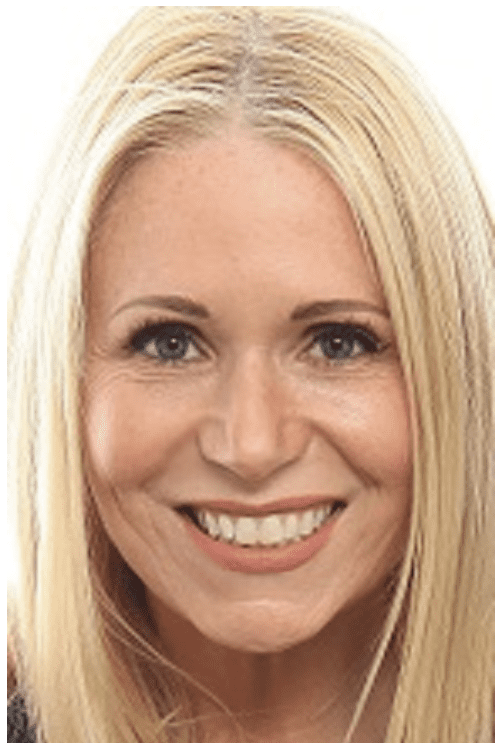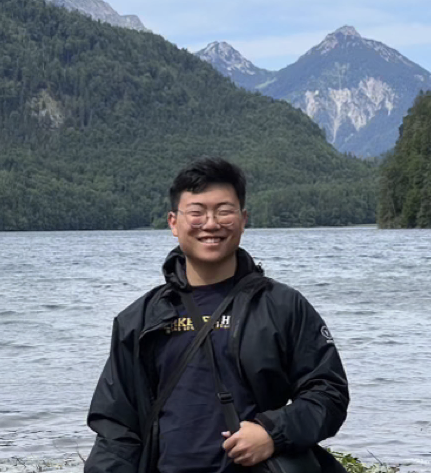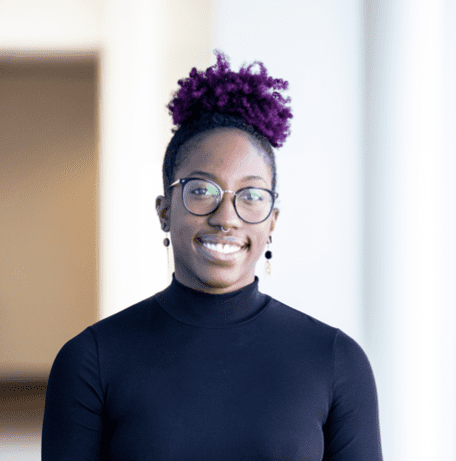Humans of Haas: Professor Dana Carney
A “self made” individual is one who possesses the qualities of determination and ambition, while lacking financial and social support. The idea of being “self made” stems from success. Yet, the concept doesn’t highlight one key associated aspect: creating opportunities for oneself breeds opportunity for other diverse individuals as well.
Berkeley Haas Professor and Director of the Institute for Personality and Social Research, Dana Carney, contributes to creating opportunities for racially segregated groups and minorities through actively combating bias in the workforce. While growing up in Marin County, California in the 1980s, Carney lacked an affluent status, and was not encouraged to receive an education. Carney recalled her childhood memory of learning about the opportunities one could receive at University, while she was in the eighth grade. Hence, her dream of receiving an education was created, progressively increasing throughout her adolescence. Carney explained how she inherited an approach from her mother, in regards to solving dilemmas in a creative, unique manner, while lacking the proper tools. Guidance and reassurance were not transparent forms of support throughout her upbringing, but Carney expressed how her learning environment prompted her to re-evaluate how she perceived her intelligence. Carney’s learning environment presented her with the notion that she had an advantage in aptitude regarding her academic endeavors. Hence, her intrinsic motivation and reassured confidence allowed Carney to become a first generation college graduate.

Carney indulged in the realm of Science at the University of San Francisco, where she described her initial interaction with a sign on her professor’s wall describing three research projects on emotional intelligence, romantic relationships, and lie detection. Carney stated, “I can’t describe it – there was this feeling I had.. studying these ideas just immediately clicked with me.” Although she had never explored scientific research, Carney’s drive and passion for the subject was evident to her professor, andonly increased throughout her career.
“I fell in love with Science. I fell in love with the idea that you could have an idea or prediction about people, and how they operate, and then you can test it… I was hooked.”
Dana Carney’s devotion to Science led her to receive a PHD in Social Psychology at Northeastern University, as well as create a research lab primarily focused on the interconnection between nonverbal communication, racial bidiscrimination, power status, and inequality.
As Carney attended Northeastern University, she was accompanied by her best friend from Georgia. Although the two women were of different races, Carney revealed that race did not depict her social group – although her companions in Marin County were not as diversified. As a university student, Carney revealed that she had never witnessed a racist encounter. However, when her companion attempted to search for housing, Carney noticed how her experience with a service representative differed to extreme measures. While attempting to search for apartments, Carney’s Black companion was informed that housing was unavailable, yet, Carney was offered housing when she called the same individual. The pivotal experience allowed Carney to process how resources are held from individuals due to their race. As a second year graduate student, “knowing, seeing it [racism] in action.. the way the world looked changed forever.” Thus, the experience inspired Carney to examine the face of racism, specifically regarding the face of racism looking the same when humans have a social bias towards individuals from various ethnic backgrounds.
As the Director of the Institute for Personality and Social Research, Carney is fascinated in researching the subtle methods of expressing nonverbal microaggressions. Carney believes that interpersonal racism is prominent in society, and targets individuals in a subtle fashion. “There are residues of nonverbal behavior in terms of racism and racial bias, we are just not aware of it,” is how Carney described modern day racism. Hence, Carney and her diverse lab community strive to combat racism by interpreting microaggression as well as nonverbal behavior.
Research Lab Questionnaire
1. How did your upbringing shape your perspective regarding the importance of incorporating diverse and underrepresented individuals into your research lab?
Carney stated that she was searching for “intelligent, intriguing individuals who brought the most to the table, and that included underrepresented groups.” Correspondingly, due to her upbringing and social group at Northwestern University, she revealed that she is sensitive to inclusivity.
“Twelve years ago I posted a lab manager position for my research lab, and the top two candidates were both Black women. The woman I hired received her PHD at Princeton, and the woman I did not hire is now my colleague. I don’t pay attention to social groups, and because of that I get the best of the best.”
2. What is the importance of inclusion in the scientific field? How do you believe that your research lab creates a safe space for underrepresented individuals?
Carney emphasized that inclusivity is important in the scientific field due to the fact that “if we are not inclusive, we are not taking the best people,” further explaining: “It’s that simple. If you are not open to people of different backgrounds, whether it’s socio-economic status, social group membership, or culture, you are going to suffer, your organization is going to suffer, your field is going to suffer, and science is going to suffer.”
While interviewing Professor Carney, it was evident that she firmly believes that diversity promotes fresh ideas due to varying experiences and backgrounds. “There is a power that stems from diversity in terms of ideas in the scientific community…When innovation is something you care about, and it adds to Science, you are always looking for ways to optimize that.”
Individuals in Carney’s research lab feel safe due to the fact that the vast amount of social backgrounds groups are diverse. Familiar faces in the lab are non-white, as Carney stated,“My lab has historically been full of non-white faces—there were years when it just so happened my face was the only white one there.” In addition to promoting diversity to create a safe space, Carney shared that there is a comfort level due to the self awareness she promotes within the lab. “I recognize that I have white privilege, I recognize that I can mess up and be corrected,” Carney detailed whilst describing her perspective as the Director.
3. How has your research lab allowed underrepresented individuals to prosper and grow in the workforce?
“People are given the opportunity to breed papers in my lab – if you add value, you get involved as a collaborator. My lab is not status oriented, rather, it is a collection of people that are coming together to brainstorm and work hard.”
Carney explained her research mentorship model, which entails collaboration in hopes to enrich ones’ experience in Science. “My model is about opening possibilities and asking myself, ‘What does this individual need to learn in order to grow into a well-rounded scientist?’”
Similarly, Carney thrives off of aiding individuals as they explore their scientific interests, with the intention of “supporting and training individuals to launch them into a career in Science, if that is what they want.”
4. In addition to defying adversity, what challenges has your research lab faced?
“Rejection has been one of the hardest challenges faced in my lab. Teaching individuals in my lab that rejection occurs 90% of the time in academia is hard to comprehend and grasp at first. You have to love what you do, and believe in your research to push forward, regardless of a negative outcome.”
Carney revealed that her lab has not experienced threatening challenges, rather, creating an atmosphere that promotes failure in order to gain valuable learning opportunities has been strenuous at times.
5. How can the Haas community utilize your story to alleviate adversities in the workforce?
“I think my lab is what the world ought to be. I don’t feel like I’m special or my lab is special. I just think that I am lucky that people trust me and feel safe around me. I feel like every minute that I spend with people from various backgrounds, I become less biased. The reality is that the culture [bias] is so strong, and white privilege is so pervasive, insidious, and so deeply ingrained in us that we don’t even know what we have. We don’t even know the ways in which it affects what we do or don’t do. My life’s work is to understand bias – it is very elusive to me… I do not understand why people are antisematic or have racial biased against social groups. My job is to block it out as much as I can, in the way I think, make decisions, and treat people.”
Essentially, the Haas community must promote self awareness regarding microaggressions and nonverbal forms of discrimination in order to combat adversities. Breaking through white privilege and recognizing that diverse individuals are not offered opportunities and careers due to their race must be emphasized on a higher scale as well.
Closing:
“There is nothing that makes me happier than opening the door for someone – because that did not happen in my life,” is how Carney describes her purpose as a Professor and Director.
Professor Carney’s touching story highlights the importance of allocating resources efficiently and effectively to ensure fairness for all genders, races, as well as cultures.
Within the Haas community, diversity promotes the allocation of ideas that can be utilized to improve business strategies. Diversity allows for a heightened sense of community as well, by channeling a variety of races and cultures to discuss a common topic of interest. Through Professor Carney’s commentary, the Haas community can further develop an understanding as to how we can rearrange our mindsets to ensure that we reject bias, specifically in the workforce and academic field.


